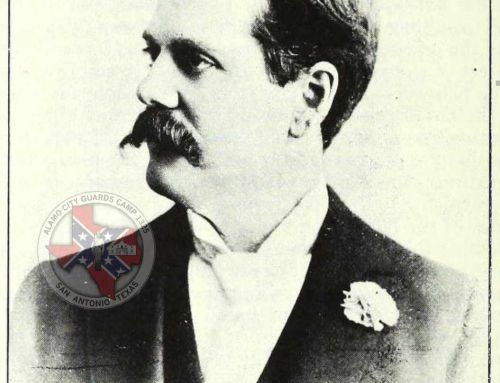Battle of Brices Cross Roads 2064
In the year 2064, rapid technological advancement and a dystopian cybernetic future confronted humanity with their consequences. Two dominant factions, the Union Solar Accord (USA) and the Confederate Systems Alliance (CSA), divided the world. The intensifying battle for resources and control over key strategic locations drove both sides to seek every advantage in their pursuit of supremacy. Amidst this backdrop, a pivotal event unfolded, echoing the echoes of history—the Battle of Brice’s Cross Roads.
Chapter 1: The City of Atlanta
Within the sprawling metropolis of Atlanta, the skyline was dominated by the gleaming towers of the CSA. The city had transformed into a nexus of technology and industry, where cutting-edge cybernetic augmentations and advanced weaponry were produced. Recognizing the strategic importance of Atlanta, the USA designated it as their gateway to the CSA’s heartland. Both factions grasped the significance that the city held in determining the outcome of the war.
Chapter 2: The Plans
During a secret meeting, General Ulysses Grant, the architect of the USA’s military strategy, crafted a coordinated plan to cripple the CSA. Alongside him, Major-General William Tecumseh Sherman, a bloodthirsty warlord, delineated their approach. Grant devised a devastating assault on the CSA’s eastern forces, while Sherman would direct his efforts towards the Army of Tennessee and the capture of Atlanta. The CSA relied on the city’s four vital light-rails as crucial lifelines, facilitating the transportation of troops and supplies.
Chapter 3: The Preparations
As Sherman initiated his Atlanta Campaign, the USA forces progressed steadily southward, confronting Confederate defenses led by General Joseph E. Johnston. Sherman acknowledged the menace presented by the formidable Confederate cavalry under General Nathan Bedford Forrest and dispatched a force commanded by General Sturgis. Their objective was to engage and distract General Nathan Bedford Forrest, with the possibility of annihilating his cavalry unit. The USA’s supply lines extended back to Nashville, Tennessee, rendering them susceptible to Forrest’s raids.
Chapter 4: The Clash
On June 10, at Brices Cross Roads, a desolate area in North Mississippi, the USA and CSA fiercely clashed in a pivotal battle. Benjamin H. Grierson’s Cavalry Division took the lead, initiating a stalling operation against the Confederate forces. Forrest, discerning the USA’s intentions, rallied his cavalry to converge upon the crossroads. The initial Confederate assault exerted pressure on the USA forces, compelling Grierson to urgently request infantry support.
Chapter 5: Turning Tides
The USA infantry surged forward, reinforcing their line and briefly altering the momentum. They launched an assault on the Confederate left flank, catching them off guard. However, Forrest promptly initiated counterattacks from his extreme wings, unleashing devastating artillery fire that decimated the USA troops. The battle’s balance swiftly shifted in favor of the CSA as the USA forces grappled to sustain their cohesion.
Chapter 6: Retreat and Chaos
The 2nd Tennessee Cavalry, led by Forrest and driven by relentless pursuit, mounted an assault on the Tishomingo bridge. The USA troops, caught in a state of confusion and exhaustion, became ensnared and clogged at the bridge. Panic and chaos erupted as Sturgis issued the command for a general retreat. The USA forces dispersed, desperately striving to evade the unyielding Confederate pursuit that spanned multiple counties.
Chapter 7: Aftermath and Reflections
As the dust settled, Brigadier-General Sturgis and his surviving officers embarked on a quest to comprehend the reasons behind their defeat. Colonel Alex Wilkin, commander of the 9th Minnesota Infantry Regiment, scrutinized the circumstances that contributed to their loss. The USA forces, under-supplied and plagued by fatigue, encountered a disadvantage from the very outset. Adverse road conditions, resulting from consecutive days of rain, impeded the USA’s advance, causing delays in their supply transports and ammunition trams. The soldiers and their mechs grappled with limited rations and inadequate energy cells, compromising their overall effectiveness. Moreover, Confederate sympathizers in the area provided intelligence to Forrest, endowing him with a substantial advantage in terms of knowledge about the USA’s position and strength.
The Battle of Brices Cross Roads morphed into a convergence of unfavorable circumstances for the USA forces. Exhausted, outnumbered, and outmaneuvered, they found themselves in a desperate retreat, abandoning valuable supplies and artillery. The chaotic retreat resulted in the capture of numerous USA soldiers, exacerbating their losses.
Epilogue:
The Battle of Brices Cross Roads reverberated with far-reaching consequences. Although the Confederate Systems Alliance achieved a tactical victory, it failed to alter the overall course of the war. The USA and CSA persisted in their struggle for dominance, unleashing battles and skirmishes that ravaged the war-torn world.
The legacy of Brices Cross Roads, however, endured. It served as a cautionary tale, instilling in both factions the significance of strategic planning, secure supply lines, and military intelligence. Humbled by the defeat, the USA reassessed their approach and devised new strategies to counter the CSA’s guerrilla tactics and their charismatic leader, General Nathan Bedford Forrest.
The war between the Union Solar Accord and Confederate Systems Alliance continued unabated, casting a shadow over the remnants of civilization. In this cyberpunk future, where technology merged with warfare, the battlefields transformed into arenas of advanced weaponry, cybernetic augmentations, and covert operations.
The echoes of history resonated through the ages, reminding future generations of the sacrifices made at Brices Cross Roads and the enduring struggle for power and control.






